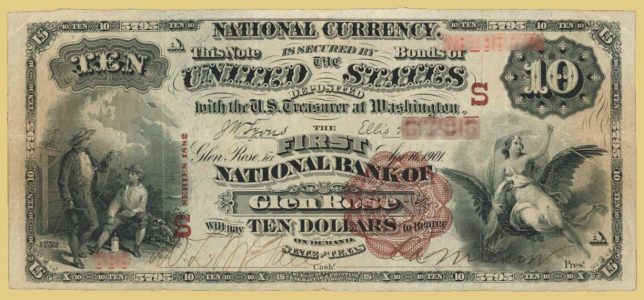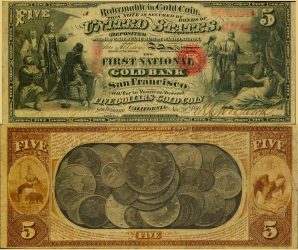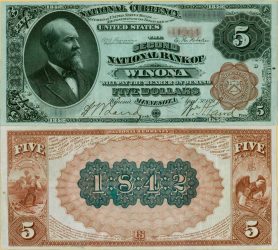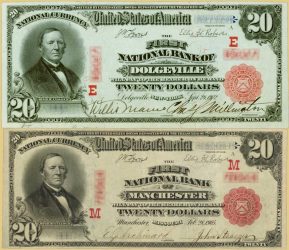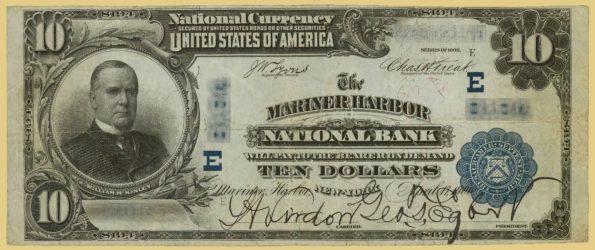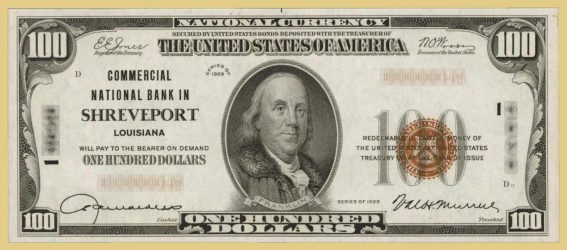National Currency Notes:
A Comprehensive Guide
National Currency Notes, also known as National Bank Notes, hold a special place in American monetary history. Issued between 1863 and 1935 by federally chartered banks, these notes are both a collector’s item and a window into the economic landscape of the United States during a transformative period. In this guide, we’ll explore what National Currency Notes are, their history, types, and why they are highly sought after by collectors.
What Are National Currency Notes?
National Currency Notes were paper money issued by local banks with a federal charter under the National Banking Acts of 1863 and 1864. These notes were backed by U.S. government bonds held by the Treasury, making them a secure and reliable form of currency at the time. The notes were printed by the U.S. Bureau of Engraving and Printing on behalf of the Treasury, but they bore the names, serial numbers, and charter numbers of the issuing banks, creating a unique blend of federal and local banking authority.
The notes circulated widely across the United States, with over 12,000 different banks authorized to issue them. This has led to a rich variety of designs and historical ties, as the notes feature everything from portraits of U.S. presidents to iconic landmarks.
A Brief History of National Currency Notes
National Currency Notes were introduced as part of the National Banking Acts during the Civil War, a period when the U.S. government sought to create a more uniform and stable currency system. Before these acts, currency was issued by state-chartered banks, often leading to instability and counterfeiting.
The new system allowed federally chartered banks to issue notes that were backed by government bonds. This created a safer, more standardized form of money, which was critical for financing the Union war effort and stabilizing the economy. The issuance of National Bank Notes continued for over 70 years, until the Federal Reserve Notes were established as the primary form of U.S. currency in the 1930s.
Types of National Currency Notes
National Bank Notes were issued in three distinct periods,
each with its own unique characteristics:
- First Charter Period (1863–1882)
This period marks the initial issuance of National Bank Notes. These notes were printed with intricate designs and often included vignettes depicting allegorical scenes or historical figures. They also bore large, bold serial numbers and charter information, making each note traceable back to its issuing bank.
- Second Charter Period (1882–1908)
During the Second Charter Period, the designs of the notes were updated, featuring more modern elements, such as blue or brown Treasury seals. The size of the notes was reduced slightly, and the designs became more standardized, although individual banks still had the liberty to include unique details.
- Third Charter Period (1908–1935)
The final series of National Currency Notes retained many design elements from the earlier periods but began to incorporate more advanced anti-counterfeiting measures. By the end of this period, National Bank Notes were being phased out in favor of Federal Reserve Notes, which were deemed more efficient for modern banking needs.
Collecting National Currency Notes
National Bank Notes are a fascinating area of collecting for both their historical value and unique designs. Their rarity and condition significantly impact their worth, as some banks issued fewer notes than others, and surviving notes can vary greatly in quality.
Factors Influencing Value:
- Rarity: Notes from smaller, less prominent banks are often more valuable due to their limited issuance.
- Condition: The condition of a note, including whether it is uncirculated, heavily worn, or damaged, is a major factor in its value.
- Historical Significance: Notes from certain periods or banks tied to major historical events can command higher prices.
Why National Currency Notes Are Important
National Currency Notes are not just collectibles; they are artifacts of a significant period in American history. They represent the evolution of the U.S. banking system and reflect the federal government’s effort to bring stability and unity to the nation’s currency. Collecting these notes offers a tangible connection to the past, allowing individuals to hold in their hands a piece of history that once passed through the hands of everyday Americans and bankers alike.
How to Identify National Currency Notes
Identifying National Currency Notes is relatively straightforward if you know what to look for. Here are some key features to examine:
Bank Name and Charter Number:
Each note bears the name and charter number of the issuing bank, typically printed prominently on the front.
Treasury Seal:
National Bank Notes often feature a blue, red, or brown Treasury seal, depending on the series.
Portraits and Vignettes:
The notes feature famous historical figures, such as Abraham Lincoln or Ulysses S. Grant, along with detailed engravings of important American scenes or allegorical depictions.
Serial Numbers:
Each note carries a unique serial number that corresponds to its issuance by a specific bank.
Explore Our Expertise & Resources
Learn more about the value in your collection and our unique process with these helpful guides:
- Have an Inherited Collection? Our guide for inheritors provides the honest advice you need to make the best decision for your family.
- Worried About Fakes? Counterfeits are a concern with all currency. Learn more in our guide to counterfeit coins and currency.
- Why Do Our Buyers Pay More? Discover the three key reasons—expertise, a large network, and a low-overhead model—that allow us to make stronger offers by reading our guide on why savvy collectors choose American Rarities.
- Alternatively, if you are curious about the broader field of U.S. paper money, visit our U.S. Paper Currency Information Page for more details.
FAQ
Frequently Asked Questions (FAQ)
Q: How do I know if my National Currency Note is valuable?
A: The value of your note depends on factors like rarity, condition, and the issuing bank. Notes from smaller banks or those in excellent condition tend to be more valuable.
Q: Can I sell my National Currency Notes to American Rarities?
A: Yes! We offer free appraisals and top market prices for National Bank Notes. Visit our selling page for more information on how to sell your collection.
Q: What makes a National Currency Note different from a Federal Reserve Note?
A: National Currency Notes were issued by individual banks under federal charters, whereas Federal Reserve Notes are issued by the Federal Reserve and are the primary form of U.S. currency today.
Find Out Your National Currency Notes Value Today
Email, Text, or Use This Form To Send Us Your Inventory List or Pictures
Email: staff@americanrarities.com | Phone: 800-622-5680 | Text: 720-600-4740
Professional Associations


